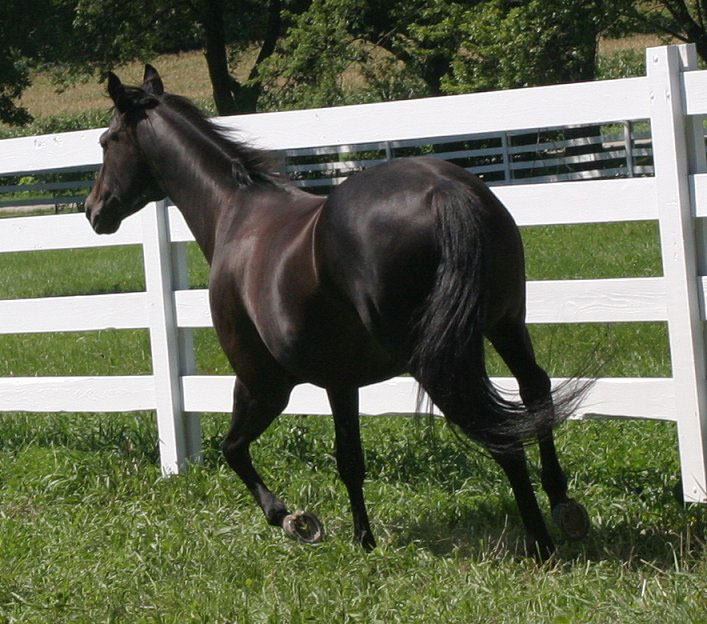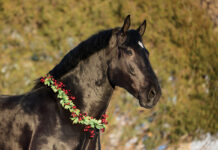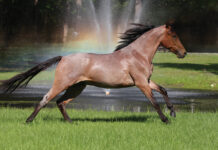
Study the pedigrees of many modern American Quarter Horses and you’ll find Thoroughbred bloodlines. Three Bars, a highly influential stallion in the Quarter Horse world, was actually a Thoroughbred.
In order to be registered with the American Quarter Horse Association (AQHA), an Appendix Quarter Horse must have one registered Quarter Horse parent and one registered Thoroughbred parent. It is also acceptable for one parent to be an Appendix numbered Quarter Horse (which will have an “X” in front of its registration number) and the other parent a Quarter Horse with a permanent registration number.
Because the amount of Thoroughbred blood can vary widely, it’s not possible to say an Appendix Quarter Horse has one specific body type. Indeed, many have a great amount of Thoroughbred blood, and as a result are taller, leaner and more long-legged than a purebred Quarter Horse. One with more Quarter Horse blood may be short-coupled and more muscular.
Some people believe the Appendix Quarter Horse gets its steady mind and personality from the Quarter Horse parent, but others say the Thoroughbred side of the pedigree contributes to intelligence and good disposition. As with any breed, every horse is an individual.
“There isn’t a lot of difference in personality and versatility between an Appendix and a Quarter Horse,” notes Jennifer Hancock, marketing director at the AQHA. “Horses bred for English disciplines and racing often have more Thoroughbred in their blood and may be considered more ‘hot’ and ‘on the muscle,’ but this really traces more to specific bloodlines than simply to the Thoroughbred or Quarter Horse breed.”
If an Appendix Quarter Horse earns at least 10 performance points in the show-ring (except in halter), or has a speed index of 80 or higher on the racetrack, the owners can apply for permanent, or full, Quarter Horse papers with the AQHA.
A number of Appendix Quarter Horses are dually registered with both the AQHA and the American Appendix Horse Association (AAHA). While the AAHA allows breeding-stock Paints in their registry, the AQHA does not. The AAHA also has a hardship clause, which accepts Appendix horses with only one registered parent, as long as the horse meets conformation requirements.
“While you can’t breed an Appendix to an Appendix for AQHA registry, Appendix horses can be bred back to American Quarter Horses with permanent numbers with the resulting foal being eligible for the Appendix registry,” notes Hancock. (The AAHA does register foals that result from breeding two Appendix Quarter Horses.)
Height: 14.3 and up.
Colors: The AQHA doesn’t register Appendix horses with pinto coloration, but the AAHA does, so long as there is Thoroughbred in the bloodlines.
Associations: American Quarter Horse Association, www.aqha.com; American Appendix Horse Association, www.americanappendix.com
Back to A Winning Combination >>
This article originally appeared in the June 2010 issue of Horse Illustrated. Click here to subscribe.






[…] A Winning Combination: Appendix Quarter Horse – Horse Illustrated […]
[…] A Winning Combination: Appendix Quarter Horse – Horse Illustrated […]